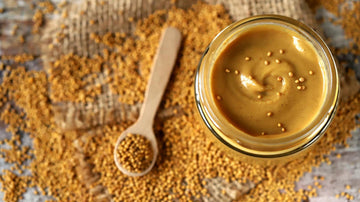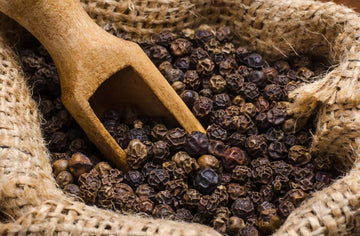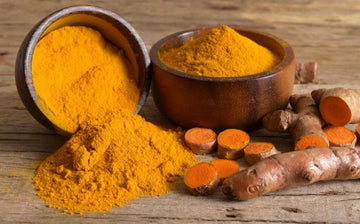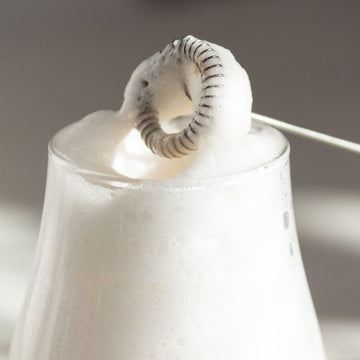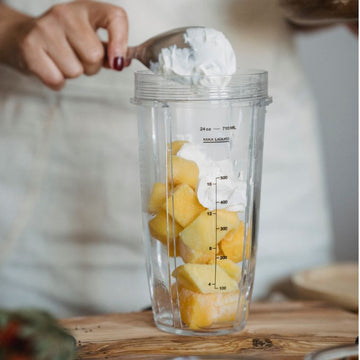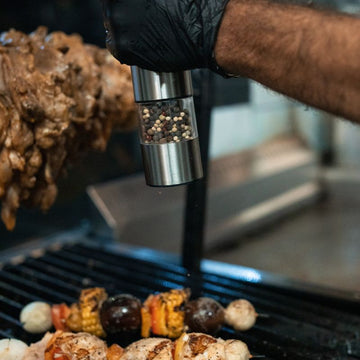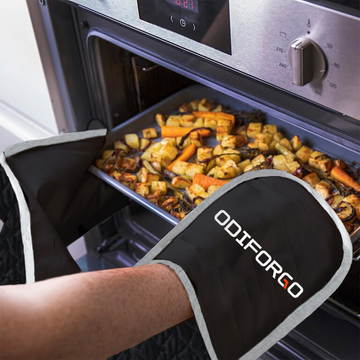Peppercorn packs bold flavor into a tiny seed. It lifts soups, steaks, and salads with heat and aroma. It is simple, yet it shapes everyday cooking.
In this guide, we explain what a peppercorn is and how it tastes. We cover black, white, green, and pink peppercorns. We compare peppercorn vs. other spices and share how to use and grind peppercorns at home.
You will also find peppercorn alternatives for quick swaps. From whole peppercorns to pre-ground pepper, we help you choose what works best. By the end, you will season with confidence and keep flavor consistent.
What is peppercorn
A peppercorn is the dried berry of the Piper nigrum vine. Farmers pick the fruit at different ripeness stages. That timing creates black, white, and green peppercorns. Pink peppercorns come from another plant, so they are not true pepper, but many cooks use them in the same way.
Flavor and aroma
Black peppercorns taste warm, bold, and slightly citrusy. They bring pine notes and a steady burn.
White peppercorns are milder but more earthy and musky. They blend into light sauces and creamy dishes.
Green peppercorns taste fresh, bright, and herbal. Brined green peppercorns add a soft pop and mild heat.
Pink peppercorns are floral, fruity, and lightly sweet. They add perfume more than punch.
Most of the “heat” comes from piperine, while essential oils give aroma. Freshly cracked peppercorns smell vivid and clean. Pre-ground pepper loses those oils fast. Whole peppercorns keep flavor longer and taste sharper when ground on demand.
Common uses

-
Everyday seasoning: finish eggs, soups, salads, and roasted vegetables with cracked pepper.
-
Proteins: crust steaks, burgers, tuna, or tofu; make classic peppercorn sauce for steak.
-
Sauces and dressings: lift pan sauces, vinaigrettes, and creamy dips with a fine grind.
-
Pickling and brines: add whole peppercorns to pickles, stocks, and poaching liquids.
-
Baking and sweets: try black pepper with strawberries or shortbread; pink peppercorns suit citrus desserts.
-
Global dishes: cacio e pepe, mapo tofu, and many spice rubs love fresh pepper.
Store peppercorns whole in an airtight jar, away from heat and light. They can hold flavor for years, but for peak aroma, buy smaller amounts and grind as needed.
Peppercorn vs. other spices
Peppercorn brings heat and aroma, but it is not like every spice in your rack. Here is how it stacks up.
-
Chili peppers and paprika: Chiles get their burn from capsaicin. The heat is sharp and front-of-mouth. Paprika adds color and sweet, smoky notes. Peppercorn heat comes from piperine. It builds slower and lingers in the throat. Use peppercorn for savory bite without smoke or red hue.
-
Szechuan peppercorn: Not a true pepper. It is the husk of Zanthoxylum. The kick is a citrusy tingle from sanshool, not classic heat. Great with chiles in stir-fries. Black peppercorn tastes warmer and more piney, with no numbing buzz.
-
Allspice: One berry, many flavors—clove, cinnamon, and nutmeg vibes in one. It is sweet-spicy and round. Peppercorn is drier, brighter, and more savory. Use allspice in baking, jerk, and stews; use peppercorn to sharpen steaks, sauces, and veggies.
-
Cumin and coriander: Cumin is earthy and toasty. Coriander is lemony and floral. Both shine when toasted, then ground. Peppercorn does not need toasting. It excels cracked fresh over hot food to release its oils on the plate.
-
White vs. black pepper in light dishes: White peppercorn blends into pale sauces and mashed potatoes without black flecks. The flavor is muskier and more subtle. Black peppercorn is bolder and more aromatic, ideal for crusts and pan sauces.
When you want clean, savory heat that fits almost anything, pick peppercorn. Reach for other spices when you need smoke, sweetness, or big perfume.
How to use/grind peppercorns
Peppercorns shine when you match the grind to the job. Use them whole for infusing, cracked for crusts, and fine for sauces and finishing.

Grind sizes and when to use them
-
Whole peppercorn: perfect for stocks, pickles, broths, and brines. Tie in a sachet and strain later.
-
Coarsely cracked: great for steak au poivre, tuna crusts, salad toppers, and roasted veggies.
-
Medium grind: everyday table seasoning for soups, sandwiches, and pasta.
-
Fine grind: smooth sauces, creamy dressings, eggs, and popcorn.
How to grind peppercorns at home
-
Pepper mill (best all-around): choose a mill with a ceramic or steel burr. Set coarse for crusts, fine for sauces. Grind directly over hot food to release aroma.
-
Mortar and pestle: add a small handful of peppercorns. Press and twist for a controlled crack. Cover loosely with a towel to keep pieces from jumping.
-
Skillet smash: place peppercorns in a zip bag or folded towel. Tap with a heavy pan or rolling pin. Fast, rustic, and great for rubs.
-
Spice grinder: pulse in short bursts to avoid heat build-up. Clean by grinding dry rice, then wipe. Keep a separate grinder for spices if possible.
Flavor timing
-
Early in cooking: adds gentle, integrated warmth; aroma is softer.
-
Midway: balances heat and fragrance.
-
At the end: bright, vivid aroma and a sharp bite.
-
Blooming: sizzle peppercorn in a little oil or butter for 20–30 seconds over medium heat. Stir so it does not scorch.
Quick usage ratios
-
Rubs: 1 to 2 teaspoons coarsely cracked peppercorn per pound of meat or tofu.
-
Sauces: 1/4 to 1/2 teaspoon finely ground peppercorn per cup of sauce.
-
Soups and stews: 1/2 to 1 teaspoon medium grind per quart, then adjust to taste.
-
Vinaigrettes: 1/8 to 1/4 teaspoon fine grind per 1/2 cup dressing.
Handy tips
-
Freshly ground peppercorn tastes brighter than pre-ground. Grind only what you need.
-
For classic cacio e pepe, toast coarse black pepper in the pan, then add pasta water to bloom before tossing with cheese.
-
Brined green peppercorns are ready to use. Drain and lightly crush for quick pan sauces.
-
Dried green peppercorns benefit from a brief soak before crushing.
-
Conversion note: 1 teaspoon whole peppercorns yields about 1½ teaspoons ground, depending on grind size.
-
Allergy caution: pink peppercorns are related to cashews; avoid if you have tree nut allergies.
Peppercorn alternatives
Out of peppercorns or avoiding piperine? Here are smart swaps that keep flavor, texture, and heat on track, with clear substitution ratios.
Best substitute for black peppercorns
-
Grains of paradise (1:1): peppery, warm, slightly citrusy; excellent in rubs, steaks, and pan sauces.
-
Long pepper (1:1, then adjust): deeper, slightly sweet and musky; grind fine for even heat.
-
White pepper (1:1): milder, earthier, and less aromatic; good when you want bite without bold perfume.
-
Szechuan pepper + chili flakes (start 1/2 the amount of peppercorn, plus a pinch of chile): adds a bright, numbing tingle; great in stir-fries and marinades.
-
Lemon pepper seasoning (1:1, reduce added salt): delivers peppery zest; ideal for chicken, fish, and roasted veggies.
Pepper-free options for heat and lift
-
Ground mustard (start at 1/2 the amount): clean, sharp warmth in dressings and sauces.
-
Fresh ginger or ground ginger (start at 1/2): bright, zesty heat; great for stir-fries and broths.
-
Horseradish or wasabi (start tiny and taste): nasal heat for cold sauces and seafood.
-
Chili flakes or cayenne (start at 1/4): direct capsaicin heat without pepper aroma.
Quick substitution cheats
-
Substitute for black peppercorns in cooking: grains of paradise 1:1; long pepper 1:1; white pepper 1:1.
-
Green peppercorn substitute in creamy sauces: brined capers 1:1 plus 1/4 teaspoon cracked black pepper per tablespoon.
-
Pink peppercorn substitute for desserts: crushed coriander + lemon zest (2:1), start with 1/2 the called amount and adjust.
Final thoughts
Peppercorns are small but mighty. From black and white to green and pink, they bring heat, aroma, and texture that lift everyday cooking. Match the peppercorn to the dish, dial in the grind, and add it at the right moment for the flavor you want.
Quick recap
-
Choose type: black for bold warmth, white for subtle bite in pale sauces, green for fresh brightness, pink for floral lift.
-
Match the grind: whole to infuse, coarse for crusts, fine for sauces and finishing.
-
Time it right: early for gentle heat, at the end for vivid aroma.
-
Swap smart: grains of paradise, long pepper, capers, and coriander blends can fill in when peppercorns run out.
Ready to level up your seasoning? Keep a fresh stash of whole peppercorns, invest in a good mill, and start finishing dishes at the table. Your soups, steaks, veggies, and vinaigrettes will taste cleaner, brighter, and more complete—one turn of the grinder at a time.
